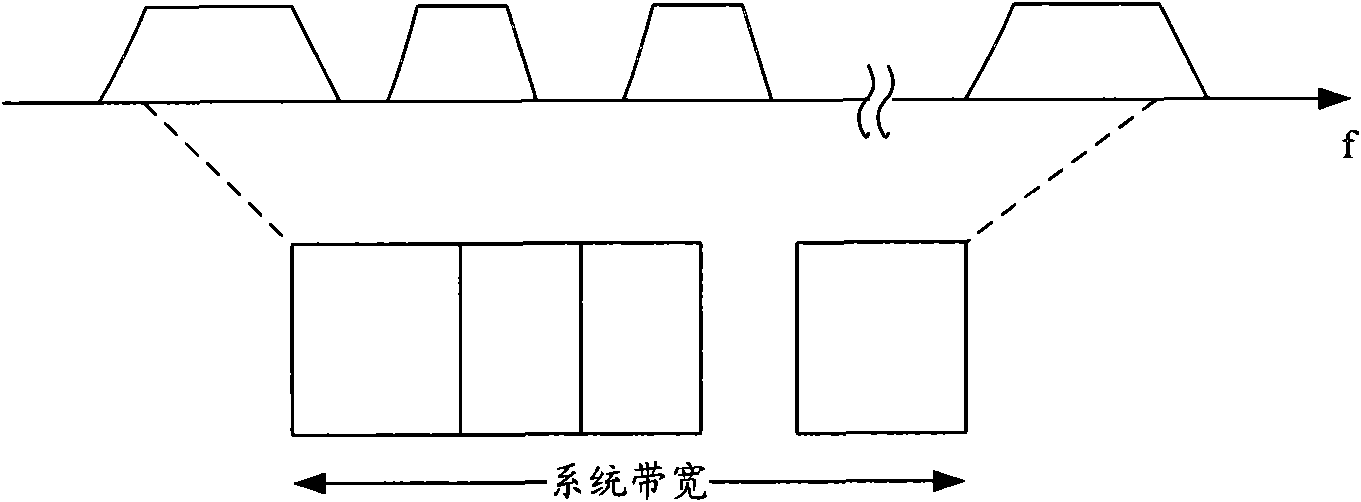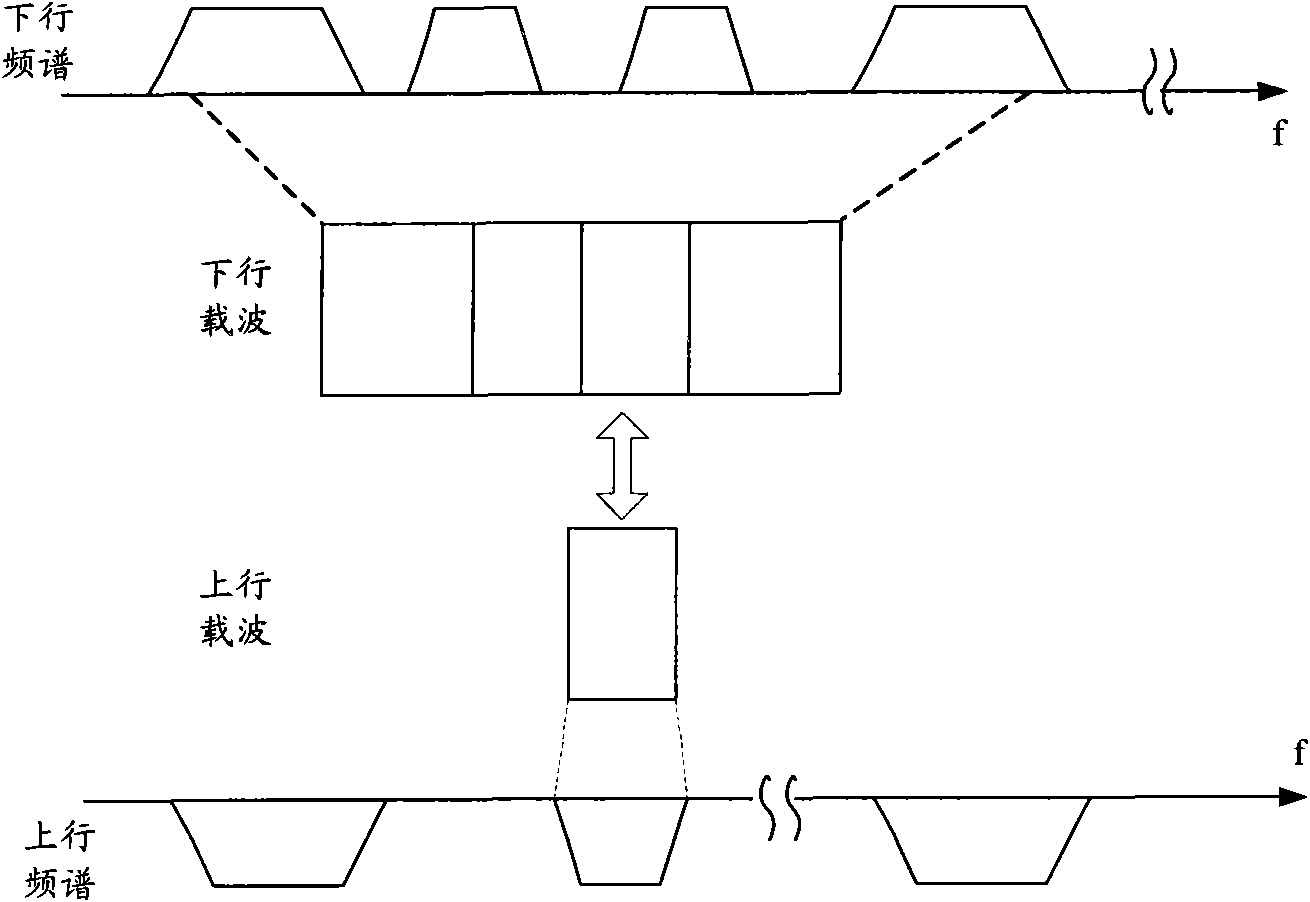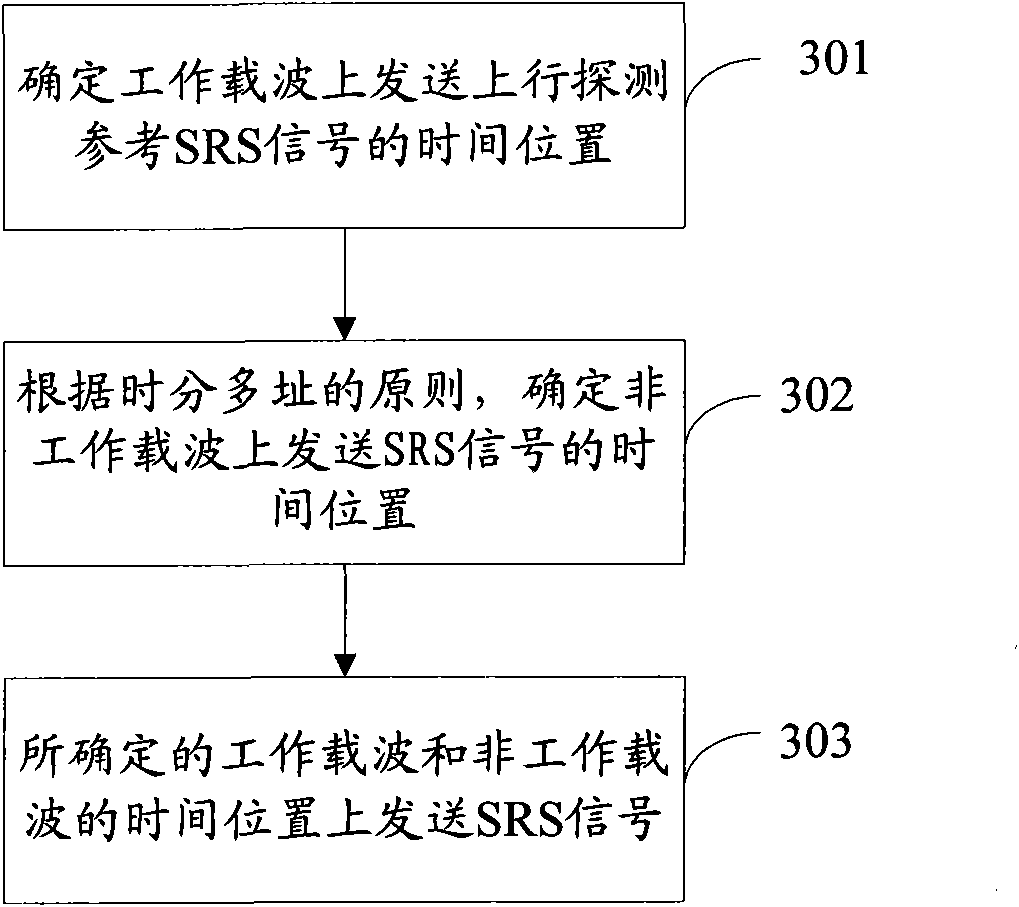Method, device and system for sending uplink sounding reference signal
A technology for detecting reference signals and signals, applied in wireless communication, communication between multiple stations, electrical components, etc., can solve the problem of not being able to know the status information of the downlink channel
- Summary
- Abstract
- Description
- Claims
- Application Information
AI Technical Summary
Problems solved by technology
Method used
Image
Examples
Embodiment 1
[0034] Embodiment 1: Insert and send SRS signals of one or more non-working carriers according to certain rules (communication protocol agreement or signaling indication configuration) within the time interval for sending SRS signals of two adjacent working carriers. The traversal of the system bandwidth or part of the bandwidth is achieved within a certain period of time. In any subframe between adjacent subframes that transmit SRS signals on the working carrier, at most one or N non-working carriers may be determined as non-working carriers for sending SRS signals on the subframe. N is the number of non-working carriers. The subframes for sending SRS signals on each non-working carrier may have the same time period or different time periods.
[0035] Figure 4 A schematic diagram of time-frequency resource distribution for sending SRS signals according to Embodiment 1 of the present invention is shown, wherein each grid represents a subframe of a subcarrier, and the time l...
Embodiment 2
[0036] Embodiment 2: At the time position of the determined subframe where the working carrier sends the SRS signal, at most one or N non-working carriers are selected as the non-working carrier for sending the SRS signal. N is the number of non-working carriers. The number of SRS information sent by the non-working carrier is determined by the communication protocol, the signaling indication configuration of the base station, or the user equipment according to preset rules.
[0037] Preferably, the subframes for sending SRS signals on each non-working carrier can be determined separately, so that the subframes for sending SRS signals on different non-working carriers are different from each other, but the subframes for sending SRS signals on each non-working carrier are working The subframe in which the carrier sends the SRS signal. For different non-working carriers, the time periods of the subframes in which the SRS signals are sent may be the same or different.
[0038] ...
Embodiment 3
[0039] Embodiment 3: Configure subframes for sending SRS signals on non-working carriers according to instruction information from the base station.
[0040] Image 6 It is a schematic diagram of time-frequency resource distribution for sending SRS signals according to Embodiment 3 of the present invention. The user equipment receives the indication information carrying the non-working carrier identifier and the subframe identifier from the base station, and uses the subframe corresponding to the non-working carrier identifier and the subframe identifier as the subframe for sending the SRS signal on the non-working carrier.
[0041]After the subframes for sending SRS signals on non-working carriers are determined according to the methods in the above embodiments, when the number of carriers sending SRS signals in the same subframe is subject to certain restrictions (such as limited power, single carrier, etc.), or the number of working carriers and When the non-working carrie...
PUM
 Login to View More
Login to View More Abstract
Description
Claims
Application Information
 Login to View More
Login to View More - R&D
- Intellectual Property
- Life Sciences
- Materials
- Tech Scout
- Unparalleled Data Quality
- Higher Quality Content
- 60% Fewer Hallucinations
Browse by: Latest US Patents, China's latest patents, Technical Efficacy Thesaurus, Application Domain, Technology Topic, Popular Technical Reports.
© 2025 PatSnap. All rights reserved.Legal|Privacy policy|Modern Slavery Act Transparency Statement|Sitemap|About US| Contact US: help@patsnap.com



